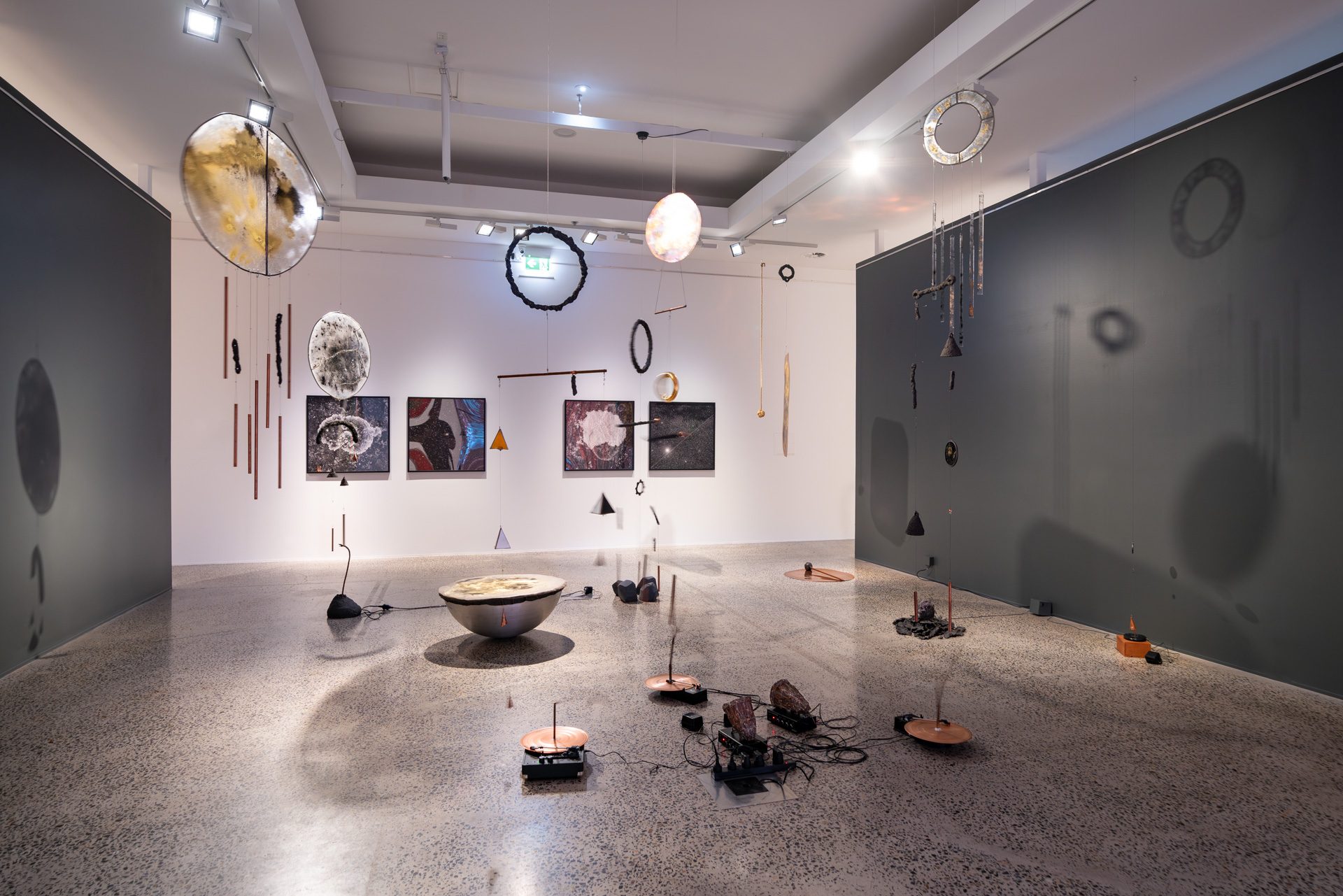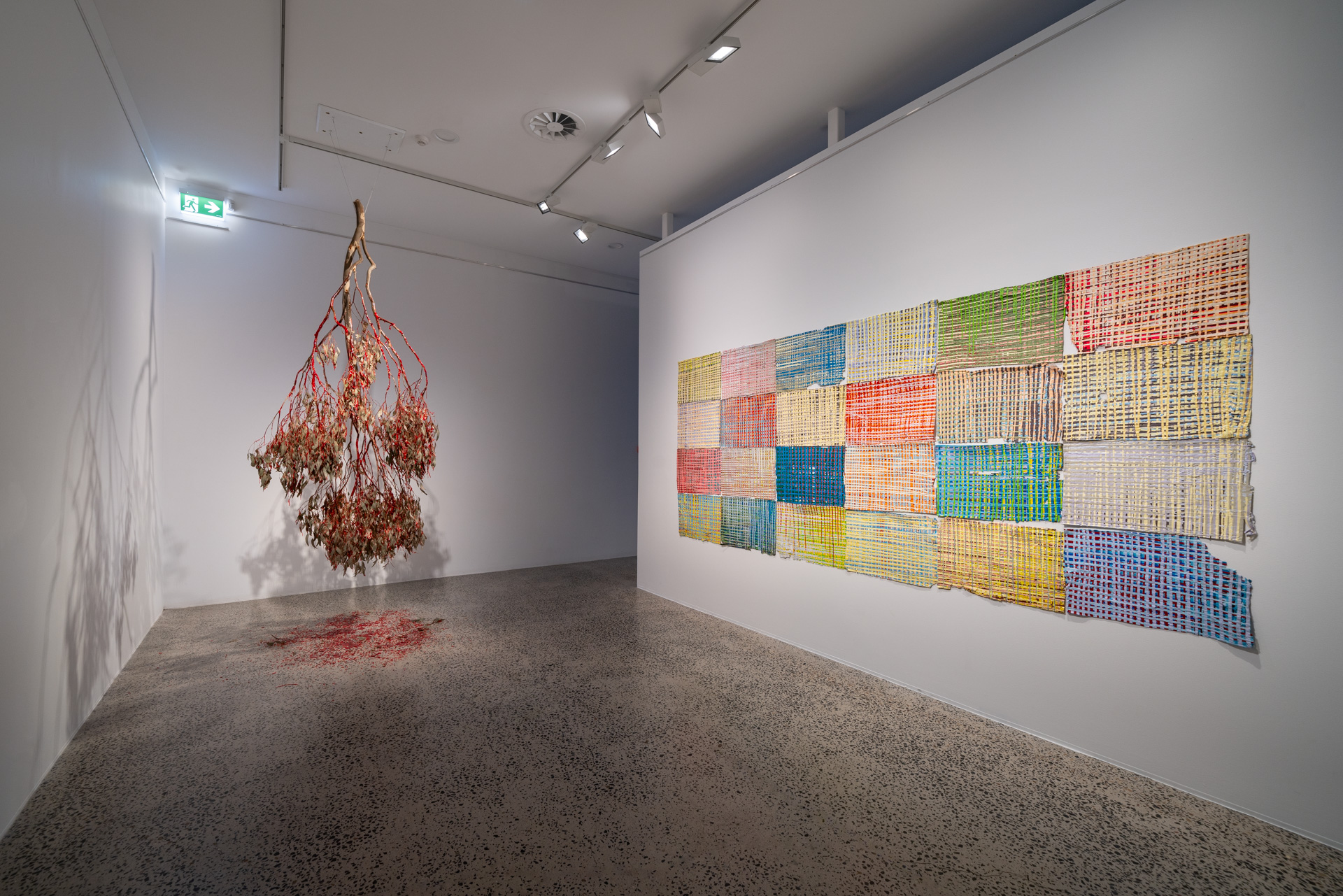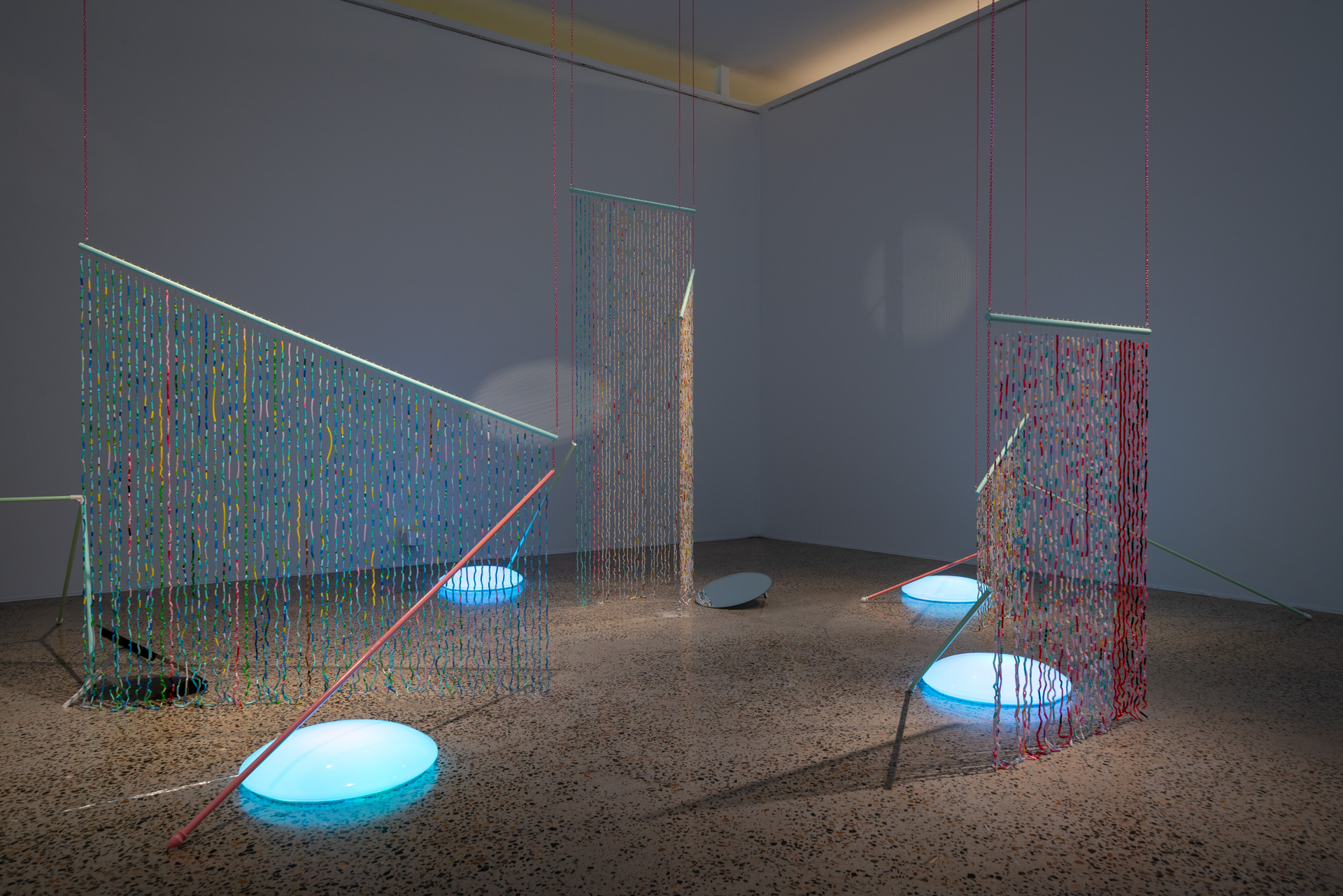West of Central
Anastasia Murney
Whenever I travel west of Sydney, there’s a particular moment I’m waiting for. It’s harder to register this moment on the train, but I know exactly where it is when I’m driving. It’s when the dense bush of the Blue Mountains recedes, and the horizon opens. Weaving through the mountains, I see the residual damage from the bushfires, flitting in and out of focus. Some ridges are dark and rich, while others are thin and frayed. The train curves around the concrete cooling tower of the now defunct Wallerawang coal-fired power station. A little further along, there is a scattering of silent houses and businesses. After passing Yetholme, the land flattens into rolling hills. There are paddocks with sheep and cattle grazing on yellowish brown grass. I see the vague outline of smaller hills in the distance. Once, a long time ago, my mum’s uncle was driving two foreign priests to a parish in the Central West. At this moment, when the land grew bigger and wider, the priests exclaimed “oh, it’s empty.” This calls to mind the legal fiction of terra nullius, but it also smacks of a more general assumption that nothing happens west of the mountains.

West of Central at Bathurst Regional Art Gallery showcases the work of seventeen artists who live and work on Wiradjuri land, otherwise known as the Central West of New South Wales. According to guest curator Ann Finnegan, the exhibition is a “celebration of place” and seeks to engage with climactic events impacting the ecologies of the region. Finnegan co-founded Cementa, a bi-annual arts festival hosted in the small town of Kandos, nestled against the western border of the Wollemi National Park. The next Cementa festival in 2024, curated by Daniel Mudie Cunningham, will be its sixth iteration. Over time, Cementa has served to strengthen the profile and visibility of regional artists working in dialogue with the issues facing the region: mining and post-mining landscapes, agriculture, drought, water security, and the entanglements of settler-colonialism with First Nations sovereignty. Almost all the artists featured in West of Central are Cementa alumni who live in surrounding towns such as Bathurst, Dubbo, Mudgee, Kandos, and Hill End.
The first room of the exhibition is a resolute statement of First Nations presence. Aleshia Londsdale’s sand painting, Disambiguation II (2023), is situated in the heart of the room. Mounds of sand ripple out from a campfire in two concentric rings. There are handprints, small green shoots, small piles of salt, black ash, and red ochre staggered from the centre. On the wall is the transfixing gaze of Dujuan Hoosen, an Arrente/Garrwa child and angangkere (healer), the subject of Blak Douglas’s portrait, Writing in Sand (2020). In Douglas’s bold, graphic style, Hoosan’s face is set against diagonal lines of white text, quoting from his 2019 speech to the United Nations Human Rights Council on juvenile detention and justice for Indigenous youth. Jason Wing’s Australian Landscape (2023) is an assemblage of bright yellow placards hanging over Lonsdale’s sand painting. Most of the placards refer to the recently approved Bowden’s mine, planning to extract mass deposits of silver, lead, and zinc, two kilometres from the village of Lue. And on the adjacent wall is Maddison Gibb’s Something in the Water (2023), an understated mural mourning the Minindee Fish Kills on the Baaka/Darling River. The black wall is filled with little silver brushstrokes, dead fish rising to the surface belly up. Gibb’s soft, undulating pattern weaves into the distance, kilometre after kilometre.

These artworks show life and death writ large in the landscape. Walking around West of Central, I think about infrastructures, the essential undergirding of societies, typically characterised as the industrial output of modernity (roads, tunnels, bridges). Ideally, infrastructure sinks below the surface of everyday life. The best infrastructure is the least visible. Their sudden eruption, in the form of potholes, toxic spills, fumes, and leaks, suggests a level of dysfunction or neglect. I am reminded of what Kathryn Yusoff writes in A Billion Black Anthropocenes or None, which is the presumed absorbent qualities of black and brown bodies to buffer the violence of the earth—absorbent like the residents of Lue or the millions of fish that suffocated in a river depleted of oxygen. Infrastructures are not just roads, tunnels, and bridges, but also waterways and river systems, native plants, and wildlife. These pressure points reveal how regional communities are proximal and vulnerable to the most acute impacts of environmental damage.
West of Central features a range of large-scale, rich, and impactful artworks. Parts of the exhibition feels somewhat congested—there’s a lot to look at. There is a slightly awkward transition between rooms, where a collaborative performance between dancer choreographer Susan Barling and sound artist WeiZen Ho takes place (unfortunately, I was unable to see it). This is part of Leo Cremonese’s eclectic and synaesthetic Voices of Being (2023), comprising a mix of paintings, textiles, and sculptures. In the middle rooms, there is a more lateral connection to place. Vicky Browne’s Cosmic Noise (2018) ticks and whirs, an ethereal constellation of kinetic sculptures: dangling pyramids, swinging circles, and other contraptions made from copper, rope, silicon, and carbon. This seems to animate some of the exhibition’s quieter artworks, such as Joyce Hinterding and David Haines’s Lichen and Stars (2021), a series of studious photographic prints drawing together local lichen patterns and distant galaxies. In collapsing the celestial with the microscopic, these works capture something of the dislocation and shifting scales of anthropogenic climate change, stretching the senses in unfamiliar ways. In a separate room near the front of the exhibition is Bill Moseley’s A Lake, a Forest and the Dark Voice of the Sea (2019), a three-channel video lingering on straining boats and crashing waves off the coast of Tasmania (South of Central?). Perhaps I am being too literal about the theme, but it was hard to reconcile the oceanic sublime and nautical tropes with the geographical rationale of the exhibition.

The final rooms of West of Central seem to emulate the model of an old colonial homestead, where feminised and domestic labour is hidden in the rear of the building. There is a haunting quality to these artworks. Georgina Pollard’s striking Chandelier for Ants (2023) is a cut Eucalyptus branch hung from the ceiling, its leaves are dipped in a glistening, toffee-red substance. Death in the water, blood on the branches. Her accompanying Mistints (2016) is a series of “woven paintings,” made through a process of dripping the paint to form fabric. The crisscrossing pastel shades of paint are organised into an imperfect grid—there are rips and tears that expose the naked canvas beneath. Pollard’s works speak to the process of settler-colonial homemaking, domestic traditions that deepen a commitment to place. The act of weaving mimics the act of trying and failing to conceal. June Golland’s Past, Present, and Continuous (2023) strikes a less sinister tone. Her installation is a shimmering collection of plastic beads hung from metallic rods like pastel rain. As Golland recounts, she was gifted the beads from a friend who stumbled on the collection in a deceased estate in Lismore. She pieces together bits of information about the woman who owned them, her house, and life. In doing so, she attempts to restore colour and texture to the disappearing histories of women in rural New South Wales. Past, Present, and Continuous is a memorial to the humble and consistent rhythms of rural life. The bead collection represents the informal economies that persist when crops fail or when extractive industries cease to operate.

In the foyer of the gallery, I notice the same cooling tower I glimpsed from the window of the train. This time, it’s the protagonist of Caitlyn Graham’s series of linocut prints, it was sad to see it go—The Wallerawang power station 1, VII (2022), chronicling the controlled demolition of the power station in 2021. In graphic black and white, the tall smokestacks snap and dissolve into clouds of dust. Burning coal is untenable. There is no movement for climate justice without phasing out fossil fuels. As Wing’s artwork demonstrates, the communities surrounding Lue are concerned about lead exposure as a result of Bowden’s mine. Their fears are not ill-founded when residents near Orange are reporting elevated levels of heavy metals in their drinking water and blood as a result of dust pollution from the neighbouring Cadia Hill Gold Mine. Conversations about mining are always messier and more complex in the regions. When mining is presented as an economic lifeline, when the multi-generational social glue of the town is forged in these industries, it’s hard work to undo. Central West communities know there are no silver bullets to the question of a more sustainable future.
Anastasia Murney is a writer and teacher living on Gadigal land. She holds a PhD from the University of New South Wales.